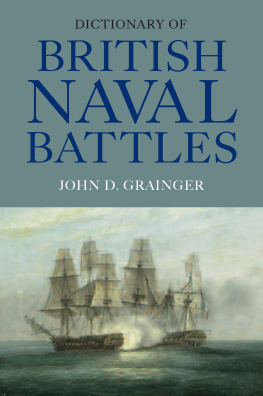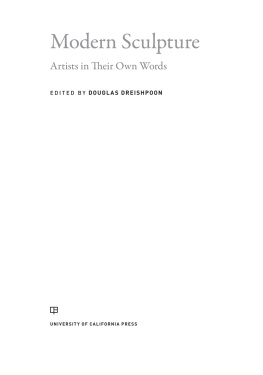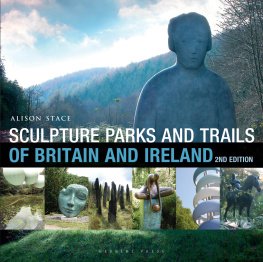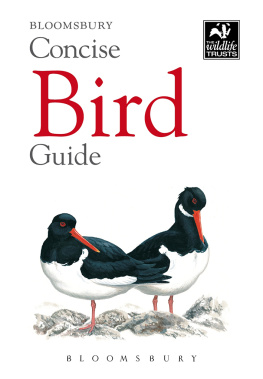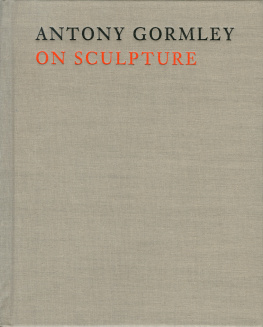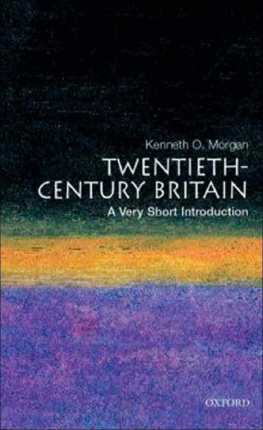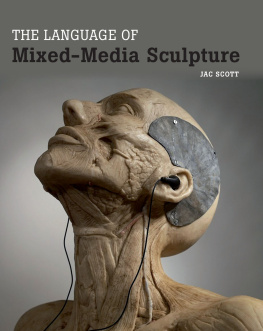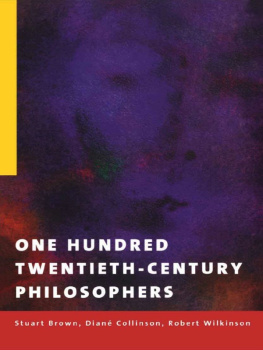First published 2003 by Ashgate Publishing
Reissued 2018 by Routledge
2 Park Square, Milton Park, Abingdon, Oxon OX14
711 Third Avenue, New York, NY 10017, USA
Routledge is an imprint of the Taylor & Francis Group, an informa business
Copyright Alan Windsor, 2003
Alan Windsor has asserted his moral right under the Copyright, Designs and Patents Act, 1988, to be identified as the editor of this work.
All rights reserved. No part of this book may be reprinted or reproduced or utilised in any form or by any electronic, mechanical, or other means, now known or hereafter invented, including photocopying and recording, or in any information storage or retrieval system, without permission in writing from the publishers.
Notice:
Product or corporate names may be trademarks or registered trademarks, and are used only for identification and explanation without intent to infringe.
Publisher's Note
The publisher has gone to great lengths to endure the quality of this reprint but points out that some imperfections in the original copies may be apparent.
Disclaimer
The publisher has made every effort to trace copyright holders and welcomes correspondence from those they have been unable to contact.
Typeset in Sabon by Bournemouth Colour Press, Parkstone
A Library of Congress record exists under LC control number: 2002026139
ISBN 13: 978-1-138-71445-8 (hbk)
ISBN 13: 978-1-315-19787-6 (ebk)
At the beginning of his essay for the catalogue of the 1996 Jeu de Paume exhibition in Paris, Un Siecle de Sculpture Anglaise on the extraordinary effervescence of sculpture in England in the twentieth century, Alan Bowness questioned whether there really is such a thing as 'English sculpture'. It must also be doubtful whether there is such a thing as 'British sculpture'. The sculpture of the last century in Britain is a mosaic of different approaches. There are groupings and patterns, but it is hard to see whether there are any overall national characteristics, A dictionary-style alphabetical approach offers the possibility of a survey as well as that of a source of reference.
The twentieth century saw great changes in artistic activity in Britain, in common with the changes effected world-wide by the revolution in art that began in Paris before the First World War. One remarkable development was the gradual establishment of sculpture in Britain as a major innovative phenomenon which, for its richness, range and strength has become a leading force in sculpture world-wide. Each decade saw the emergence of new impulses and fresh talent.
The century began with the more adventurous British sculptors still under the influence of the French artists Auguste Rodin and Jules Dalou (the latter teaching in London from 1871 until 1880). In the last quarter of the nineteenth century, the 'New Sculpture' of such artists as Bates, Thornycroft, Alfred Gilbert and Alfred Drury, for example, introduced a realism, sensitivity and sophistication that enlivened the Victorian sculptural world.
With the arrival of the American Jacob Epstein in 1905, and the presence in London in 1911 of the brilliantly precocious young French sculptor Henri Gaudier-Brzeska, the beginning of the second decade was marked by the awareness of Cubism, Primitivism and the practice of direct carving in stone. These factors contributed to an abandonment of traditional proportions, of anatomical modelling and Classical ideals of beauty.
After the First World War, major buildings such as the London Transport Headquarters and Broadcasting House, as well as a number of war memorials, were decorated (not without controversy) with works by Epstein, Eric Gill, Charles Sargeant Jagger and the young Henry Moore, exposing in prominent places the avant-garde of modern sculpture to the general public.
During the 1930s Barbara Hepworth and Moore identified themselves with the latest developments in international art. The Russian constructivist Naum Gabo, who settled in England in 1935, encouraged British artists to participate in exhibitions which anticipated an idealistic revolution in European culture based on serenity, purity, simplicity and extreme if not totally non-figurative abstraction. Typically, carved and polished surfaces of wood and stone forms were pierced with holes, and spaces were defined with multiple strings. Moore, however, who was strongly aware of disturbing psychological and social forces, was drawn also to Surrealism, which he absorbed into a powerful and personal vision of the human figure in its setting.
In 1948, Moore won the International Prize for sculpture at the Venice Biennale. The then emergent younger generation of Reg Butler, Lynn Chadwick and Eduardo Paolozzi was given prominence at the Festival of Britain Exhibition on the South Bank in 1951. A series of splendid exhibitions (from 1948 onwards) in Battersea and Holland Parks in London gave the public the opportunity to see new work by Kenneth Armitage, Robert Adams, Robert Clatworthy, Elisabeth Frink, Bernard Meadows and Hubert Dalwood, among many others. The work of this generation tended to be harsh, pessimistic and expressive of anxiety; much sculpture resembled the discoveries by archaeologists of the once-interred damaged fragments of some remote civilization.
The sixties were marked by a reaction against that approach in favour of large-scale welded metal constructions, often using industrially produced steel girder sections to make floor-mounted abstract statements of form and space. Initially inspired by the American artist David Smith, Anthony Caro also used strong colour on the surfaces of his works, as did Phillip King, who played an important role at St Martin's School of Art, where Caro taught and where a whole new generation of sculptors was encouraged.
Within that circle of students and teachers, however, yet another reaction was prompted by John Latham, Barry Flanagan, Gilbert & George and Bruce McLean, who were leading figures in the creation of irreverent, satirical and subversive works during the later 1960s. They dominated the following decade, which saw performance, photography and installation growing in importance as activities related to sculpture.
Another development away from the urban, gallery and museum-located, smooth, hard-surfaced machine aesthetic of welded steel sculpture, was Environmental Art, also, in some respects, initiated in the United States. Although Richard Long has made many floor and wall pieces from slate, stone, wood or mud, the traces and records of Hamish Fulton's and Long's walks in remote parts of remote countries have often left no permanent trace of their existence other than photographic evidence. The same is true, where the spectator cannot visit the site, of many works by David Nash, Andy Goldsworthy and Richard Harris. Their often fragile and sometimes ephemeral structures, erected in landscape using impermanent materials such as snow or ice, employing natural, 'found' objects like rocks, leaves or branches, or even living and growing trees, were and are a homage to nature and a statement of man's relationship to his environment. William Pye, although working in the contexts of new architecture or landscape gardening, manipulates water - that most elusive of materials - with an astonishing control developed from the closest observation of natural phenomena. In his often gigantic works, Anish Kapoor explores a wide range of techniques from the most elemental splitting, roughdressing or smashing of stone to the most subtle and refined, traditionally based carving and polishing techniques, as well as using powdered colour and moving water.


